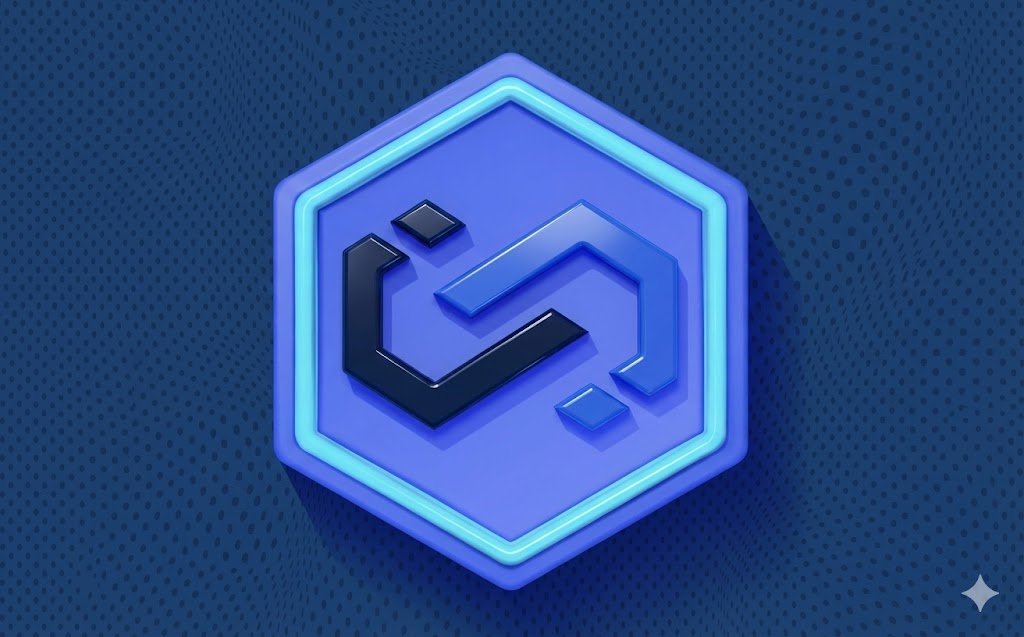When most people hear the term crypto mining, they immediately think of Bitcoin. But while Bitcoin mining uses Proof-of-Work (PoW), not all crypto networks rely on the same method—and not all “mining” looks the same anymore.
For businesses and traders looking to understand the backbone of different blockchains, it’s crucial to grasp how various protocols generate new coins, validate transactions, and secure their networks. This article breaks down what “mining” really means across different consensus models, how the term has evolved, and what that means for the future of crypto.
What Is Crypto Mining?
At its core, crypto mining is the process by which new coins are created and added to the blockchain. In most networks, it also plays a key role in securing the system and validating transactions.
Originally, mining referred strictly to Proof-of-Work, where participants compete using computing power to solve cryptographic puzzles. But today, the term has broadened to include staking, validating, and even liquidity provision, depending on the network.
These newly created coins are fundamentally blocks of cryptographically secured data that represent a unit of value on their respective network.
How does crypto mining work?
Crypto mining is the process of validating and recording new transactions on a blockchain network by solving complex cryptographic puzzles. This process secures the network and ensures the integrity of transaction history.
In Proof-of-Work (PoW) protocols like Bitcoin, miners compete to solve a mathematical challenge based on the previous block’s data. The first to solve it gets to add the new block to the blockchain and is rewarded with newly minted coins (the “block reward”) and transaction fees.
In other protocols, “mining” may refer more broadly to mechanisms that generate or allocate new tokens. For example:
- Proof-of-Stake (PoS): Validators are selected to propose blocks based on the amount of tokens they’ve staked, not computational effort.
- Delegated Proof-of-Stake (DPoS) and Proof-of-Authority (PoA) use different forms of voting or reputation to assign block production rights.
While the term “mining” originated with PoW, it is now sometimes used informally across protocols to refer to the generation or distribution of new tokens.
What do crypto miners do?
Crypto miners maintain the blockchain by:
- Validating transactions: They verify that each transaction follows protocol rules (e.g. no double-spends, correct signatures).
- Competing to create blocks: In PoW systems, miners race to solve a hash puzzle; in doing so, they secure the network and enable consensus.
- Broadcasting valid blocks: Once a miner finds a valid solution, they share the new block with the network. Other nodes verify and build upon it.
- Earning rewards: Miners receive block rewards and transaction fees, which incentivizes participation and security.
In non-PoW systems, while they may not be called “miners” strictly speaking, participants (e.g. validators, stakers, block producers) perform similar network-supporting functions: proposing, validating, and finalizing blocks while earning protocol-defined rewards.
Mining solves two jobs at once:
- Mints new coins via a fixed issuance schedule (the “block subsidy”). This predictable, rule-based creation of supply underpins the asset’s scarcity.
- Locks in transaction history by making it computationally costly to create valid blocks, so the longest (most-worked) chain is the authoritative one. This is the mechanism Satoshi proposed to solve double-spending without a central authority.
What are the types of Crypto Mining?
Here are the different types of mining and their impact.
1. Proof-of-Work (PoW): The Original Mining Model
Examples: Bitcoin, Litecoin, Dogecoin
Proof-of-Work was first introduced in Bitcoin’s 2008 whitepaper by Satoshi Nakamoto. It remains the most energy-intensive model but also the most proven in terms of long-term security.
How it works:
- Miners compete to solve a complex mathematical problem.
- The first to solve it adds a new block to the chain and receives a reward (new coins + transaction fees).
- The difficulty adjusts every few blocks to maintain a consistent block time (e.g., 10 mins for BTC).
Why it matters:
- It’s secure and censorship-resistant.
- High hardware and energy costs limit who can mine, but also make attacks expensive.
Transaction finality is strong on PoW networks. Once a few confirmations are in, a transaction is nearly irreversible. But fees can spike during congestion, and transaction speeds are slower than newer networks.
2. Proof-of-Stake (PoS): Energy-Efficient Mining
Examples: Ethereum (post-Merge), Cardano, Solana, Avalanche
Proof-of-Stake replaces hardware with capital. Instead of solving puzzles, validators stake coins (lock them up) to earn the right to propose and validate blocks.
How it works:
- Validators are chosen based on how much they’ve staked.
- Honest behavior is rewarded; malicious actions result in slashing (losing staked funds).
- Block proposers and attesters share in the block reward and transaction fees.
Why it matters:
- It drastically reduces energy consumption (Ethereum’s energy use dropped by ~99.95% post-Merge).
- It enables faster and cheaper transactions compared to PoW.
Lower fees and faster confirmations make PoS networks more practical for DeFi and trading. But staking introduces new risks—e.g., slashing, validator downtime, and centralization among large staking providers.
3. Delegated Proof-of-Stake (DPoS): Community-Elected Validators
Examples: EOS, Tron, Lisk
In DPoS, token holders vote for a limited number of block producers or delegates, who take turns validating blocks.
How it works:
- The top-voted delegates are responsible for producing blocks.
- They earn rewards and share them with voters.
- Voting power is proportional to token holdings.
Why it matters:
- Faster block times and lower fees.
- But centralization risk is higher due to the limited number of validators.
Transactions are near-instant, and fees are minimal. However, traders should be aware that governance decisions (like freezing assets or altering rules) can happen quickly if a few delegates collude.
4. Proof-of-Authority (PoA): Validators Are Pre-Approved
Examples: VeChain, XDC Network, Palm Network
In PoA systems, block validators are known, trusted entities—often companies or consortium members.
How it works:
- Validators are vetted and given authority to add blocks.
- There’s no competition or staking; it’s about reputation and agreement.
Why it matters:
- Extremely fast and efficient.
- Suitable for enterprise or supply chain use cases.
These networks are often used for tokenized assets and enterprise use, not speculation. But they’re important to understand if your business is building on blockchain or interacting with tokenized RWAs (real-world assets).
5. Hybrid Protocols and Emerging Variants
Some protocols blend multiple approaches or introduce novel mechanics:
- Ouroboros (Cardano): A secure PoS variation with formal verification.
- Nominated Proof-of-Stake (Polkadot): Combines staking with community nomination.
- Proof-of-History (Solana): Adds a cryptographic timestamp system for high throughput.
- Liquid Staking (e.g., Lido, Rocket Pool): Allows users to stake without locking funds, using synthetic tokens.
Staking derivatives (like stETH) can affect DeFi strategies. Some networks offer lower latency and high throughput ideal for trading, gaming, or payments. Others prioritize composability, cross-chain communication, or regulatory compliance.
Rewards, Halvings, and the Issuance Schedule
In any blockchain network, rewards serve two main purposes:
- Incentivize participation, whether you’re a miner, validator, or storage provider
- Distribute new tokens into circulation
But how this happens and how sustainable it is depends on the protocol.
Bitcoin and PoW Chains: Scheduled Halvings
Bitcoin uses a fixed issuance schedule. Every ~210,000 blocks (about 4 years), the block reward halves. As of April 2024, it’s 3.125 BTC per block. Eventually, rewards approach zero. This controlled supply reduction is Bitcoin’s solution to the problem of inflation, mimicking the extraction of a scarce resource from the ground.
In addition to the subsidy, Bitcoin miners also earn transaction fees, especially during congestion. Together, subsidy + fees = the network’s security budget.
As subsidies shrink, the network must sustain security through usage-driven fees. Businesses relying on BTC for settlement should track mempool congestion and fee volatility closely.
PoS & PoS-Hybrid Chains: Dynamic Inflation
Protocols like Ethereum, Solana, and Avalanche don’t use halving schedules. Instead, they dynamically adjust token issuance based on staking participation, inflation targets, or governance votes.
- Ethereum: Since The Merge, block rewards go to validators instead of miners. The actual supply may even deflate when burned fees (via EIP-1559) exceed rewards.
- Solana: Has a long-term target of ~1.5% annual inflation, gradually decreasing over time, with rewards going to validators and delegators.
- Why it matters: For token holders, issuance affects long-term value. For DeFi apps, validator rewards impact staking yields, inflation risk, and the total cost of security.
Alt Models: Resource-Based or Usage-Driven
Other chains tie issuance to real-world contributions:
- Filecoin rewards miners for storing and retrieving data.
- Chia “farms” coins based on unused hard disk space.
- Sui & Aptos use “gas-pricing” markets to influence block reward economics.
These systems often prioritize useful work, not just hashing or staking.
Difficulty & Finality: How Networks Stay Predictable
For PoW chains like Bitcoin, “difficulty” refers to how hard it is to find the next valid block. Every 2,016 blocks (~2 weeks), Bitcoin recalibrates to target 10-minute block intervals. If blocks arrive faster, difficulty increases. If slower, it drops.
Predictable block times = predictable settlement = easier to build financial products. Spikes in hashrate don’t lead to inflation—they just trigger retargeting.
For PoS chains, difficulty is abstracted away. Finality is controlled by validator consensus—usually in seconds, not minutes—and depends on network latency, validator uptime, and economic weight.
- Ethereum finality: ~12–15 seconds
- Solana: Sub-second block times, but liveness affected by network design
- Avalanche: Near-instant probabilistic finality after quorum votes
Protocol Security: Why Attacks Are Hard
Every blockchain secures its transaction history through a consensus mechanism, but the methods and guarantees vary significantly. Here’s how different protocols manage security and business risk.
Proof of Work (PoW): Cost-Based Security
In PoW (e.g., Bitcoin, Litecoin), blocks are cryptographically linked into an immutable chain. To alter a past transaction, an attacker must redo the proof-of-work from that point forward and outpace the honest network.
This requires controlling the majority of the network’s hashrate (a 51% attack). The immense economic cost makes chains like Bitcoin high-trust settlement layers, where waiting for multiple confirmations ensures payment finality.
Proof of Stake (PoS): Stake-Based Security
PoS chains (e.g., Ethereum, Avalanche) use validators who stake tokens as economic collateral. Malicious acts, like signing conflicting blocks, result in “slashing,” where their stake is destroyed.
An attacker would need to control a large portion of the total staked value (often 33%-66%) and avoid immediate slashing. The primary risks involve validator collusion or centralization, making the decentralization of the validator set a critical business consideration.
Hybrid and Niche Models
Some protocols use alternative models to balance trade-offs:
Proof of Space & Time (Chia): Uses disk space instead of energy, reducing energy consumption but raising questions about long-term durability.
DAG-based consensus (Aleph Zero): Enables high throughput and fast finality but requires complex logic to resolve conflicts.
Scalable PoW (Kadena): Braids multiple chains to scale proof-of-work, attempting to overcome its traditional limitations.
Each model introduces unique security assumptions that directly impact a business’s risk profile.
Mining Hardware, Pools & Decentralization
In PoW networks, mining hardware has evolved rapidly: CPUs → GPUs → FPGAs → ASICs
Top miners now measure in terahashes per second and joules per terahash.
Mining rewards are probabilistic. One miner might go days without finding a block. That’s why most join pools—coordinated groups that distribute work and smooth out payouts using methods like:
- PPS (Pay Per Share): Fixed payouts per contribution
- PPLNS (Pay Per Last N Shares): More variable but fairer over time
Pools use protocols like Stratum to assign work and submit valid shares. But large pools raise centralization risk. That’s why newer designs like Stratum V2 include job negotiation, allowing miners to choose which transactions to include—helping reduce pool-level censorship risk.
If you’re building on-chain infrastructure, choosing a protocol with robust and appropriate security guarantees is essential to long-term viability.
Energy Use and Environmental Context
A blockchain’s consensus model dictates its resource consumption—whether it secures itself through energy expenditure, capital commitment, or alternative resources. This directly impacts sustainability, regulatory compliance, and operational costs for businesses operating on-chain.
Proof of Work (PoW): Energy-for-Security Model
PoW chains like Bitcoin and Litecoin convert electricity into security, making attacks economically prohibitive. Energy sources vary widely, from stranded renewables and flare gas to grid power.
While critics highlight total consumption and e-waste, proponents argue PoW monetizes otherwise wasted energy and creates demand for renewable development. Industrial miners increasingly prioritize low-carbon sources for both economic and ESG reasons.
Proof of Stake (PoS): Capital-for-Security Model
PoS chains like Ethereum and Solana replaced energy-intensive mining with capital staking, reducing energy use by over 99%. This model appeals to environmentally conscious institutions and regulators but introduces different risks—including capital lockup, stake centralization, and governance manipulation.
The environmental advantage is clear, but the economic security model requires careful evaluation.
Hybrid and Alternative Protocols
Emerging consensus models aim to blend benefits:
- Chia: “Proof of Space and Time” using unused storage.
- Radix: Cerberus consensus with sharded parallel processing.
- Aleph Zero: DAG-based PoS for instant finality.
- Kusama/Polkadot: Nominated PoS (NPoS) with parachain auctions.
Each introduces different resource requirements, latency tradeoffs, and decentralization models, impacting how the chain scales and how reliable its settlement layer is for business use.
Who Mines (or Validates) and Where the Coins Go
Understanding where block rewards originate—and how they move into the market—helps traders, analysts, and institutions model supply dynamics, volatility, and long-term incentive alignment.
In PoW Systems:
- Block rewards go to miners, usually via pools that distribute payouts by contribution.
- Coins are born in the coinbase transaction of each block.
- Miners sell to cover costs, often via OTC desks, hedging risk or building treasuries in bull markets.
- Mining is now industrial: operations optimize uptime, cooling, fleet upgrades, and location-specific power deals.
These supply dynamics matter:
- Sudden sell pressure (bear markets, miner capitulation)
- Reduced emissions (post-halving, hardware turnover)
- OTC flows vs. exchange inflows (impacting price discovery)
In PoS Systems:
- Rewards go to validators and delegators who stake tokens.
- New issuance or fee-based rewards are distributed automatically based on participation.
- Tokenomics vary: some chains dilute supply; others recycle fees or impose penalties (slashing) to reduce inflation.
PoS economics affect:
- LTV of staking yield
- Validator centralization
- Real cost of securing the chain (i.e., what validators risk vs. what they earn)
If you’re building a product, custodying assets, or trading tokens, the protocol’s energy profile and issuance mechanics affect:
- Security assumptions — how reliable are settlements?
- Compliance and ESG reporting — especially in regulated or institutional contexts.
- Asset issuance or token design — what consensus model fits your market?
- Market timing and volatility — when do emissions change? Who sells, and why?
Smart businesses don’t just look at “blockchain” generically. They ask: which protocol? What mechanism? What tradeoffs?
Tax Implications of Crypto Mining
Crypto mining is typically considered a taxable activity in most jurisdictions. The specific obligations depend on your location and whether you’re mining as a hobby, as a business, or operating industrial-scale infrastructure.
Key tax considerations include:
- Income recognition: Newly mined coins are usually taxed as income at the time they’re received, based on their fair market value.
- Capital gains: If you later sell or trade the mined crypto, you may owe capital gains tax on any increase in value from the time you acquired it.
- Business deductions: If you mine professionally, you may be able to deduct expenses like electricity, hardware, and depreciation—but you may also face additional obligations (e.g. GST/VAT, business registration, etc.).
- Recordkeeping: You’re typically required to keep detailed records of when you mined, the value of coins at receipt, and when/how you disposed of them.
Always consult a qualified tax professional in your jurisdiction—crypto tax treatment is evolving and highly dependent on local regulations.
Is Crypto Mining Legal?
Crypto mining is legal in most countries, but local laws vary widely. In some regions, mining is fully permitted and even supported with tax incentives or access to surplus energy. In others, it’s restricted or banned due to concerns about energy usage, capital controls, or financial risk.
Key legal factors to consider:
- Energy use and permits: Some regions require special permits for high-consumption activities like mining.
- Regulatory classification: Mining may trigger licensing requirements (e.g. as a money transmitter, virtual asset service provider, or digital asset business).
- Sanctions compliance: In many countries, using mined crypto to evade sanctions or transact with blacklisted entities is illegal.
- Land and zoning laws: Industrial-scale miners must also comply with zoning, safety, and environmental regulations.
If you’re mining in a professional or large-scale capacity, it’s essential to seek legal guidance to ensure full compliance with local laws and global standards.
Can Anyone Still Mine?
Yes, but profitability for individual miners is challenging without access to cheap, reliable power and suitable facilities for loud, hot equipment. Here are the key considerations:
Capital Requirements
Modern ASIC miners represent significant upfront investment with rapid depreciation. Efficiency (J/TH) is critical—lower values mean better electricity economics. Beyond hardware costs, budget for infrastructure (PDUs, cooling, networking) and operational expenses (shipping, duties, hosting fees). ASICs should be treated as depreciating industrial assets, not long-term investments.
Electricity Economics
Power cost dominates profitability calculations. Use this simple check:
Daily profit ≈ (Revenue_per_TH × Your_TH) – (Power_kW × 24 × $/kWh)
If power consumes most revenue, the operation isn’t viable. Stable rates and clear interconnection terms often matter more than marginal efficiency gains.
Operational Demands
ASICs generate intense heat and noise (75-90 dB), requiring professional thermal management, dust control, and redundant systems (fans, PSUs, internet). Zoning permits, fire codes, and neighbor relations become critical considerations for 24/7 operations.
Revenue Variance
Solo mining resembles a lottery with unpredictable payouts. Most miners join pools for steadier income, choosing between:
- PPS: Predictable payments with higher fees
- PPLNS: Lower fees but more variance
Diversifying across reputable pools mitigates over-centralization risks.
Alternative Approaches
Where direct mining isn’t feasible, consider:
- Professional hosting services
- Hashrate contracts (with counterparty risk awareness)
- Strategic coin accumulation
Some operations leverage stranded energy (flare gas, curtailed renewables) for improved economics, though these typically require industrial partnerships. For PoS networks, staking replaces mining with different risk profiles.
Bottom line
Mining is the monetary engine and security wall of PoW networks. It mints new coins on a predictable schedule and makes fraud costly by tying block production to verifiable work.
Difficulty keeps time, incentives align honest participation, and an economic majority makes attacks impractical—exactly the design Satoshi outlined in 2008 and the reason PoW still secures the largest cryptoasset today.
For individuals, success hinges on cheap power, solid ops, and disciplined risk management; without those, buying and self-custody often wins. For enterprises seeking to participate without the operational overhead, ChainUp’s Mining solutions provide a streamlined, institutional-grade pathway to Bitcoin mining.




